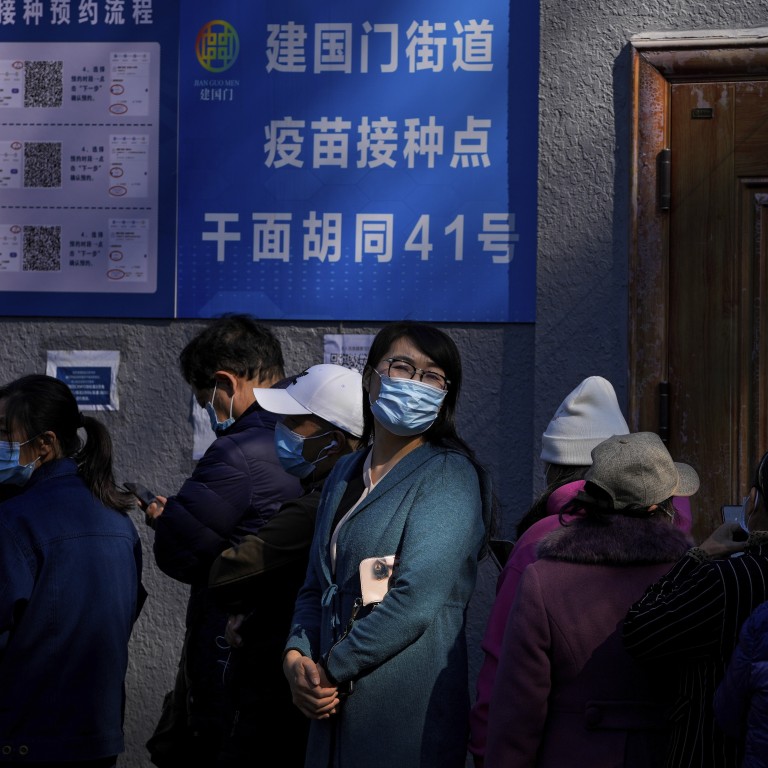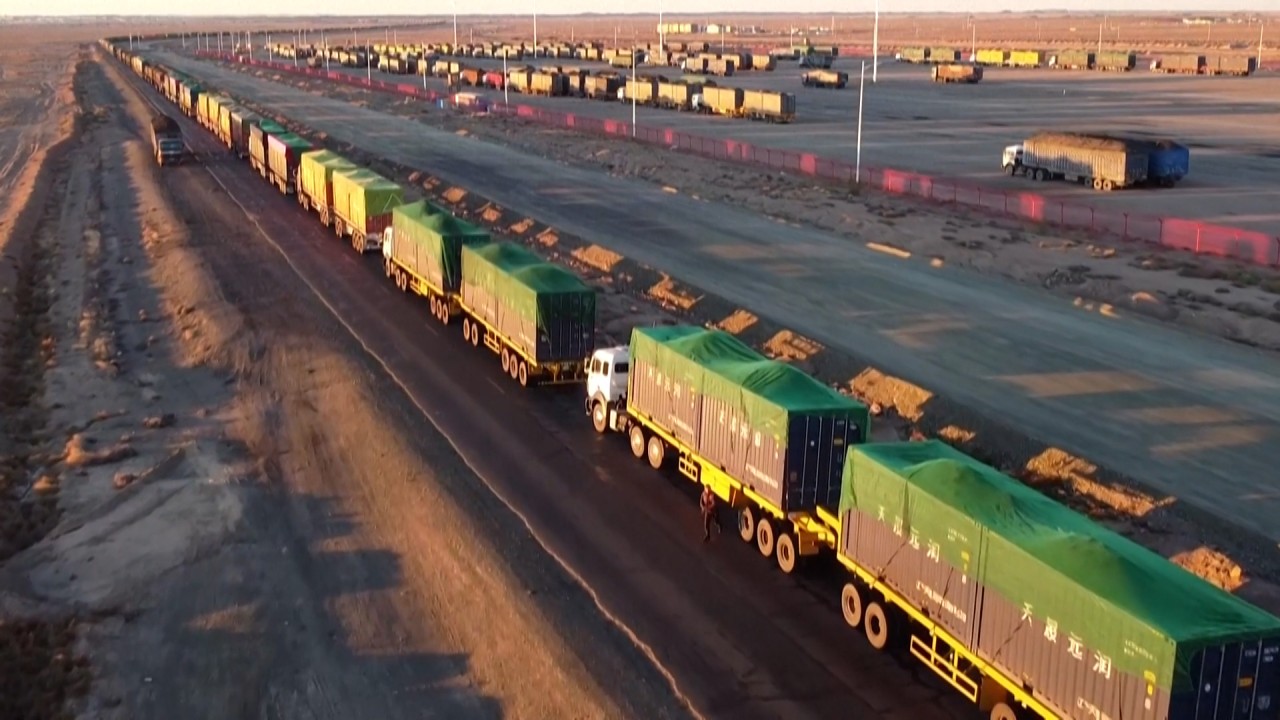
Coronavirus: northern China battens down to contain outbreaks
- More than two dozen community cases added to national tally amid tourism-linked clusters
- No initial source identified as Covid-19 spreads to seven regions and provinces
Beijing authorities moved on Sunday to restrict travellers from places with confirmed cases, requiring a negative Covid-19 test and 14 days of health monitoring for any person wanting to enter the capital.
The moves came as China announced 26 new community cases of Covid-19 for Saturday, with outbreaks in multiple provinces and health authorities on alert as winter approaches.
“There is an increasing risk of further spread of this epidemic,” National Health Commission spokesman Mi Feng said on Sunday.
“Areas experiencing the epidemic should quickly enter a state of emergency, and areas where there is no epidemic, should strengthen monitoring and early warnings.”

04:18
Mongolian coal truck drivers isolated and unpaid at Chinese border due to strict Covid-19 measures
New local cases were reported on Saturday in Inner Mongolia, Gansu, Ningxia, Shaanxi, Hebei and Beijing, adding up to more than 130 new confirmed cases reported in China since last Sunday, according to a tally of daily official reports.
Saturday’s cases included seven in Inner Mongolia, six each in Gansu and Ningxia, and four in Beijing. Shaanxi and Hunan also added one case each.
The city of Shijiazhuang in Hebei province also joined the list with one confirmed case.
The source of the epidemic is still being traced, but 106 of 133 cases recorded in the past week were linked to transmission chains from 13 tour groups and groups of road-tripping tourists, Wu Liangyou, deputy head of the NHC’s disease control and prevention division, said on Sunday.
Wu said genetic analysis indicated that these outbreaks were not linked to previous ones in China, suggesting the strain came from overseas.
Beijing’s insistence on zero-Covid strategy challenges long-held assumptions about China
That cluster first emerged after a retired couple from Shanghai tested positive at a hospital in Xian last Saturday – prompting mass testing of at-risk people in the city and the closure of several major tourist attractions visited by the couple and their five companions, who later tested positive as well.
Two areas – a residential community in Beijing and a town in Inner Mongolia’s Ejina Banner – were classified as high risk as of Sunday, with nearly a dozen communities and areas including in Gansu, Inner Mongolia, and Ningxia listed as medium risk. Restrictions have also been imposed in those areas to contain the spread.
In Ejina Banner, where around 25 cases have been reported over the past week, several health officials were reprimanded by the Communist Party, with two stripped of their positions for poor performance on epidemic prevention and control, according to a government notice.
No mixed Covid-19 booster shots for China until scientists are sure, top disease expert says
At least two such groups of tourists – including the Shanghai couple’s travel group – ate at the same restaurant in Ejina Banner, according to mainland media reports, and separate groups of travellers are believed to have been infected on a train.
The latest cases have put the focus on domestic tourism, which has bounced back since last year while international borders remained closed to tourists.
On Friday, the Ministry of Culture and Tourism called on tourist venues, travel agencies and local authorities to “strictly implement epidemic prevention and control requirements” – including crowd controls, regularly testing employees, and ensuring hygiene in restaurants and hotels.

06:05
As more countries ditch ‘zero-Covid’ policy, why is China opting to ‘wait and see’?
In Beijing, the new cases include five people who went on a road trip together to Inner Mongolia, Ningxia and Shanxi, a Beijing health official said on Saturday.
The capital broke its streak of over two months without a community case earlier in the week after a resident who shared a train cabin with a travelling companion of the Shanghai couple tested positive.
Tour guides and a driver were among patients identified in Gansu province, according to local media.
Districts in Lanzhou and the city of Zhangye were locked down in recent days, with non-essential businesses shut and residents asked not to leave.
Train services have been altered or suspended across affected areas and the cities of Lanzhou, Jiayuguan and Zhangye in Gansu, Erenhot and Ejina Banner in Inner Mongolia have suspended road transport services. Beijing, Inner Mongolia, Guizhou, Gansu and Ningxia have also suspended inter-provincial tourism operations.
The outbreak of cases across the country reflects the complexities health authorities face going into winter, when other respiratory diseases like flu are also expected to challenge health systems.

